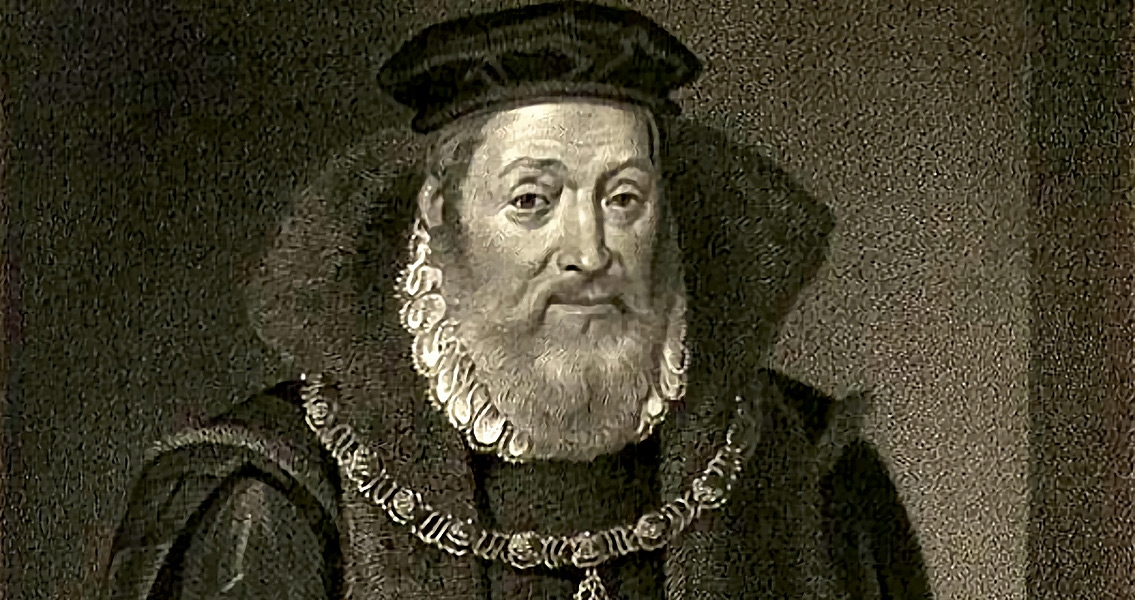<![CDATA[Following the Scottish defeat at the Battle of Solway Moss the previous year, England and Scotland signed the treaties of Greenwich on 1st July, 1543. Coming at a time of frequent conflict between England and Scotland, a key clause of the treaties was that Mary Queen of Scots, then aged one, was betrothed to Prince Edward Tudor, then aged five. The two treaties of Greenwich were part of a plan by English King Henry VIII to unite England and Scotland. The first treaty secured peace between the warring neighbours. The second, containing the betrothal, was intended to unite the two crowns into one, by marrying a Tudor heir to the future Queen of Scotland. At this time protestant England found itself in a tactically precarious position. The Auld Alliance between Scotland and France meant that England was surrounded by enemies. A particular concern was that the French could use Scotland as a base to launch an invasion of England from the north. Both England and France viewed marriage of a member of their royal family to the recently born Queen Mary as a vital diplomatic, political and tactical tool, and as such made moves to try and form a treaty to do so. The Battle of Solway Moss was fought between England and Scotland in November 1542. In the previous months Scottish soldiers had launched a series of raids across the English border, burning houses and farms, and capturing members of the nobility. The Battle at Solway Moss was part of a campaign by Henry to stop the Scottish raids into English territory. In addition, it can also be seen as part of the broader campaign to break Scottish ties with France and pull Scotland closer to England. Although the death toll at the battle itself was not especially high, the English captured 1200 Scottish soldiers, including important figures such as Earls, Lords, and 500 landowners and noblemen. It was a humiliating defeat for the Scottish King James V, who was also suffering the indignity of not having a male heir. The king died within three weeks of the battle's end. With a substantial swathe of the country's nobility imprisoned in the Tower of London and the Scottish military out fought on the battlefield, the Scottish representative, the Earl of Arran, was forced into accepting the terms of the treaties of Greenwich. The Scottish Parliament ultimately cancelled the treaty in December 1543, with the English insistence that Scotland dissolve the Auld Alliance having caused particular anger. Henry's retaliation was shockingly brutal, even by the standards already established in the long conflict between England and Scotland. English armies were sent north with the only intention being for them to cause destruction and fear until the Scottish Parliament agreed to the marriage between Mary and Edward. Henry's orders to his troops were clear: "...Put all to fyre and swoorde, burne Edinborough towne, so rased and defaced when you have sacked and gotten what ye can of it, as there may remayn forever a perpetual memory of the vengeaunce of God lightened upon them for their faulsehode and disloyailtye." For two years English armies, under the command of the Earl of Hertford, waged a campaign of destruction and terror in Scotland, destroying whole towns such as Dunbar and Leith. Henry died in 1547, but the campaign continued under the leadership of the regent, Edward Seymour, Duke of Somerset. The Scots suffered a particularly devastating defeat at the Battle of Pinkie Cleugh, when a bombardment from English artillery, longbow men and naval forces led to a shocking death toll, and highlighted the arrival of modern military techniques to the British Isles. Ultimately, Mary's mother secured her daughter's safe escape to France, where it was agreed she would marry the Dauphin Francis, the son of the French king. Despite the bloody retaliation for breaking them, the two treaties of Greenwich had failed to achieve their main aim.]]>
The Treaties of Greenwich
